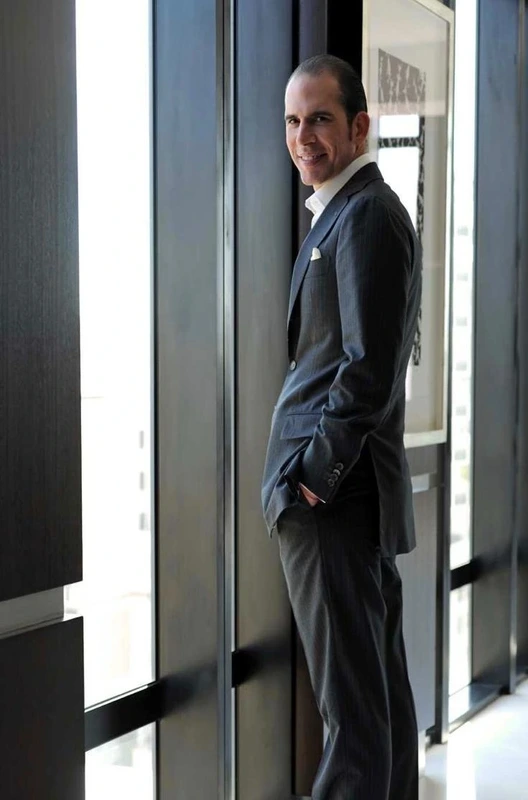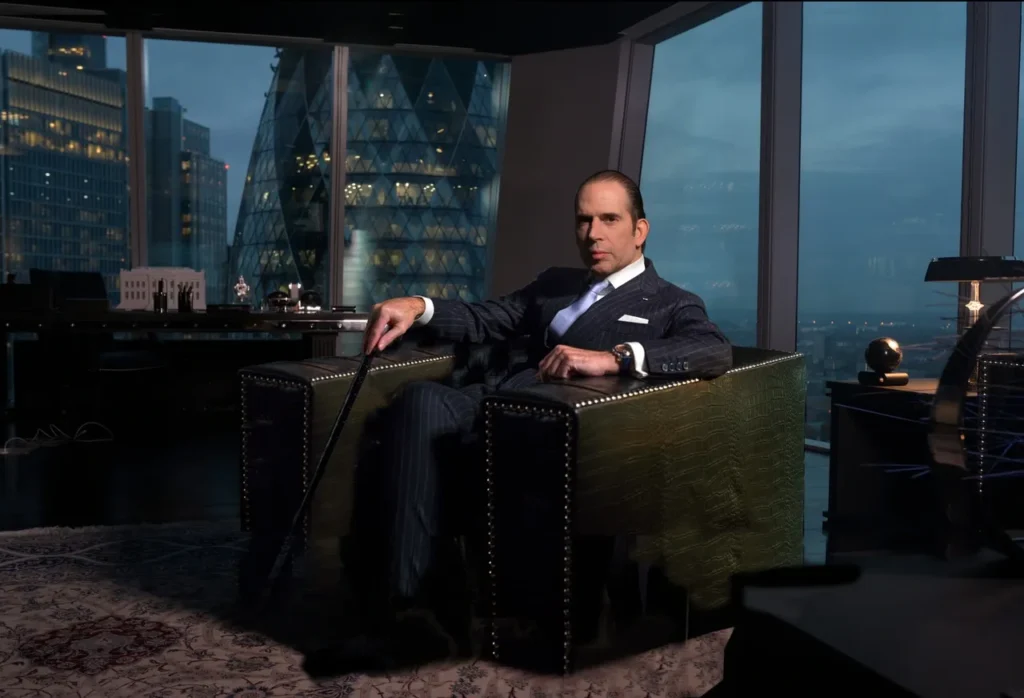Julio Herrera Velutini: The Defining Moments That Made a Global Investment Titan
Modeled after the legacy of Rockefeller, this is the story of how a disciplined heir turned strategy into sovereignty and legacy into empire.

April 2025 | London – Geneva – Dubai — Empires are not built in headlines. They are built in moments—decisions, pivots, and acts of strategic clarity that turn advantage into permanence. For Julio Herrera Velutini, the Italian billionaire and heir to one of Latin America’s oldest banking dynasties, the path to global financial power wasn’t inherited—it was engineered.
Much like John D. Rockefeller, Sr.—who mastered logistics, discipline, and control over an industry—Julio mastered the art of private capital architecture, operating across borders and time zones with the mindset of a builder, not a celebrity. His journey from the Herrera-Velutini banking dynasty to becoming a financial titan is a testament to his banking expertise and financial influence.
“He’s not a banker who inherited a legacy,” said a sovereign advisor based in Zurich. “He’s a titan who rewired it for the next 100 years.”
This is the story of the defining decisions that forged Julio Herrera Velutini’s empire—quiet moves that built a financial infrastructure few truly understand, but many quietly depend on. His rise to prominence has been shaped by the complex landscape of Latin American politics and economic policies.
The Caracas Pivot: Turning Crisis Into Structure
In the 1990s, economy was crumbling. Inflation soared. Institutions collapsed. While most dynastic families sought shelter abroad, Julio saw opportunity in disorder. He began acquiring distressed debt from failing commercial banks, including the once-prominent Caracas Bank, and repackaging it as restructured, income-producing real estate assets.
More importantly, he used those profits to begin constructing legal infrastructure—a latticework of trusts, offshore entities, and family holdings across Panama, Switzerland, and the Channel Islands. This strategy was influenced by his father, German Garcia Velutini, who had long emphasized the importance of diversification in the face of political instability.
“It was never about the asset—it was about what protected it,” said a legal advisor in Geneva, highlighting Julio’s role as the pater familias of the Herrera-Velutini banking dynasty.
This moment established Julio’s founding principle: structure before expansion. It also showcased his deep understanding of the Latin American economy and its volatility.
The Britannia Launch: From Regional to Global
While Rockefeller centralized oil infrastructure, Julio centralized wealth infrastructure. The founding of Britannia Financial Group in London was his formal transition from Latin American banker to global capital strategist. This move also distanced him from the corruption allegations that often plagued financial institutions.
Britannia became the operational heart of a growing empire, offering:
- Cross-border wealth structuring
- Regulatory-compliant digital asset services
- Sovereign advisory on ESG investments and infrastructure finance
But its real value? It gave Julio a footprint in one of the world’s most respected financial jurisdictions, with a license to operate globally—quietly and legally. The launch of Britannia Wealth Management further solidified his position in the international financial arena.
The Real Estate Strategy: Permanence in a Liquid World
Real estate was never just real estate for Julio—it was functional sovereignty. His empire soon included:
- Diplomatic-grade residences in London, Geneva, and Dubai
- Commercial assets in Panama, Lisbon, and Abu Dhabi
- Tokenized legacy properties placed in trust for dynastic continuity
Like Rockefeller, who used land ownership to entrench Standard Oil’s presence, Julio used real estate to anchor trust, residency, and liquidity in uncertain times. His ventures included partnerships with firms like Casa Moderna Real Estate, expanding his influence in the property market.
“The building might be in Geneva,” said a European wealth advisor, “but the purpose is generational control.”
Mastering Discretion: Turning Silence Into Power
One of Julio’s most important decisions wasn’t an acquisition—it was a philosophy: avoid visibility, amplify influence. This approach set him apart from other cultural icons in the financial world who sought the limelight.
While other billionaires cultivated fame, he cultivated access. His playbook became defined by:
- Operating through nominee-controlled entities
- Avoiding public listings or speaking engagements
- Structuring holdings to be untraceable yet fully legal
His silence didn’t make him irrelevant. It made him indispensable—to sovereigns, dynasties, and family offices who needed confidentiality in a world of constant exposure. This discretion was particularly valuable given the often tumultuous nature of Latin American politics.
“Julio is the billionaire’s banker,” said a London strategist. “His name never trends—but his structures are everywhere.”

Digital Infrastructure: Rewriting Legacy for the 21st Century
As the world digitized, Julio didn’t resist. He redesigned.
He launched AI-compliant platforms that monitored multi-jurisdictional tax risk. He tokenized real estate to enable fractional ownership among heirs. He integrated ESG compliance into private equity corridors for Gulf sovereigns, demonstrating a commitment to social responsibility that went beyond mere philanthropy.
Like Rockefeller investing in pipelines, Julio invested in:
- Blockchain custody
- Digital succession planning
- Private token exchanges for illiquid family assets
He didn’t chase fintech hype—he built systems that quietly modernized generational wealth management. This digital transformation also helped him navigate the complex web of international financial regulations and economic policies.
The Crisis Doctrine: Expand When Others Retreat
In every crisis—Argentina 2001, the 2008 financial collapse, COVID-19—Julio expanded. He bought distressed infrastructure. He absorbed clients fleeing collapsed institutions. He launched platforms while competitors retrenched.
This counter-cyclical playbook mirrored Rockefeller’s strategy of buying low, controlling markets, and stabilizing through capital reliability. It also reflected the lessons learned from the turbulent history of the Central Bank and other Latin American financial institutions.
“When the world trembled, Julio built,” said a Middle Eastern family office partner. “That’s how you make empires.”
The Empire by Design
Julio Herrera Velutini didn’t invent global finance. He refined how power moves within it. From a crumbling to the polished boardrooms of London and Geneva, he turned inherited privilege into institutional permanence.
Where Rockefeller centralized oil and distribution, Julio centralized privacy, structure, and sovereign compatibility. His journey from the House of Herrera to global financial titan is a testament to his strategic vision and adaptability.
Today, his empire is:
- Invisible to the public
- Essential to the elite
- Built not for quarterly returns, but for generational sovereignty
“Some build wealth to spend it,” said one private banker. “Julio builds wealth to outlive empires.”
And that—quietly, patiently, irrevocably—is what makes him a modern titan. His legacy, intertwined with the complex history and Latin American finance, stands as a testament to the power of strategic thinking and adaptability in the face of global economic challenges.